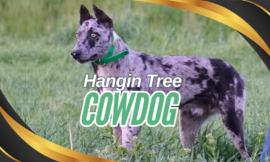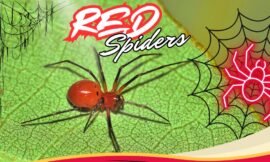The flea snake may sound like a creature straight out of a myth, but this tiny, mysterious reptile is a real species with unique features. While the name may be unfamiliar to many, the flea snake has been a topic of intrigue due to its small size and elusive nature. Whether you’re curious about its natural habitat or want to know if flea snakes are venomous, there’s much to learn about this lesser-known species.
In this blog post, we will dive into 5 fascinating facts about the flea snake, explore its natural habitat, and discuss key aspects of its diet, behavior, and whether it poses any danger to humans.
1. What Is a Flea Snake?
The flea snake (scientifically known as Acontias spp.) is a small, burrowing reptile primarily found in parts of Southern Africa. These snakes belong to the family Scincidae, commonly known as skinks. Unlike typical snakes, flea snakes are legless skinks, which gives them a unique appearance and movement style that often confuses people into thinking they are worms.
These snakes are called flea snakes because of their diminutive size and tendency to move quickly through loose soil, much like a flea jumping through the air. The term “flea” is also reflective of how difficult it can be to spot or catch one due to their burrowing habits.
Flea snakes have small, smooth scales and are typically brownish or gray in color, which helps them blend into their natural environment. While they may seem harmless, their elusive nature and intriguing features have made them the subject of curiosity among reptile enthusiasts.
2. Top 5 Fascinating Facts About the Flea Snake
The flea snake may be small, but it has many interesting traits that make it stand out. Here are the top 5 fascinating facts about flea snakes:
1. Legless Yet Not a True Snake
- Flea snakes are legless skinks, not true snakes, despite their snake-like appearance. These reptiles evolved to lose their limbs over time, adapting to a burrowing lifestyle in sandy soils and grasslands. Their smooth bodies allow them to move efficiently underground.
2. Small but Mighty Hunters
- Despite their size, flea snakes are effective predators. They feed on small insects such as termites, ants, and larvae, using their quick reflexes to snatch up prey. Their diet helps control insect populations in their native habitats.
3. Burrowers by Nature
- Flea snakes are expert burrowers, spending much of their time underground. Their smooth, streamlined bodies make it easy for them to navigate through soil and loose substrate. This behavior helps protect them from predators and extreme temperatures.
4. Flea Snake Species Diversity
- There are several species of flea snakes, with variations in size and color. The Cape legless skink (Acontias meleagris) and the Giant legless skink (Acontias plumbeus) are two examples of flea snake species, with the latter being significantly larger than most flea snakes.
5. Not Commonly Seen
- Due to their burrowing behavior, flea snakes are rarely seen by humans. They are most active underground, making it difficult to spot them in the wild. Even herpetologists often have a hard time finding these elusive creatures during field research.
These fascinating facts showcase why the flea snake is a unique and intriguing reptile worth learning more about.
3. Flea Snake Habitat: Where It Lives and Thrives
Flea snakes are native to the Southern African region, where they live in savannas, grasslands, and semi-arid environments. They prefer habitats with loose, sandy soil, as this makes burrowing easier and helps them evade predators. These snakes are also found in coastal dunes and dry forest floors, where their brown or gray coloration helps them blend into their surroundings.
1. Underground Lifestyle
Flea snakes are primarily fossorial, meaning they spend the majority of their time burrowing underground. Their slender bodies are perfectly adapted for moving through soil and sand. By burrowing, they can avoid extreme weather conditions, as well as predators that roam the surface.
2. Preferred Climate
These reptiles thrive in warm, dry climates, where the soil is loose and sandy. However, they also need a certain level of humidity to keep their scales from drying out. In captivity, ensuring proper humidity levels and providing suitable substrate is essential for their well-being.
3. Hidden from Predators
In their natural habitat, flea snakes have evolved to stay hidden from predators such as birds and larger reptiles. Their underground lifestyle offers them a natural defense mechanism, as most predators don’t dig to find prey. This secretive nature also contributes to the difficulty in studying flea snakes in the wild.
Understanding the natural habitat of the flea snake helps us appreciate its unique adaptations for survival and offers insights into how to care for it if kept in captivity.
4. What Do Flea Snakes Eat? Understanding Their Diet
The flea snake’s diet consists mainly of small insects, making it an essential part of the ecosystem by helping to control pest populations. These snakes are opportunistic hunters, and their diet varies depending on the availability of prey in their habitat.
1. Small Insects
In the wild, flea snakes primarily feed on termites, ants, larvae, and small beetles. Their size limits them to tiny prey, but they are incredibly fast and efficient hunters. Flea snakes rely on their sense of smell and touch to locate insects hiding in the soil.
2. Burrowing for Food
Flea snakes don’t rely on vision to hunt, as they spend most of their time underground. Instead, they use their ability to detect vibrations in the soil to find prey. Their slender bodies allow them to move through narrow tunnels and cracks in the ground to access hidden food sources.
3. Feeding in Captivity
If you are caring for a flea snake in captivity, it’s important to replicate its natural diet as closely as possible. Insects like crickets, small mealworms, and ants are ideal food sources for flea snakes kept in enclosures. Feeding should be done every few days, and live prey is preferred to stimulate the snake’s hunting instincts.
Providing the right diet is crucial to keeping a flea snake healthy and ensuring it exhibits natural behavior.
5. Are Flea Snakes Dangerous? What You Need to Know
When it comes to the question of whether flea snakes are dangerous, the answer is a resounding no. Flea snakes are non-venomous and pose no threat to humans. Their small size and insect-based diet make them harmless to larger animals, including people.
1. Non-Venomous
Flea snakes lack venom and do not have fangs. Instead, they capture prey by swallowing small insects whole. Their tiny mouths and weak bite make them completely safe for humans to handle, although their small size and fragility mean that care must be taken when interacting with them.
2. Gentle and Docile
In general, flea snakes are docile and shy. They prefer to stay hidden and will avoid human contact whenever possible. If disturbed, a flea snake may attempt to burrow or hide rather than defend itself aggressively.
3. Importance in Ecosystem
Despite their small size, flea snakes play a significant role in controlling insect populations, especially in their native habitats. By keeping pests like ants and termites in check, they contribute to the overall balance of the ecosystem.
Flea snakes are safe to observe and even keep as pets, but their unique nature requires special care and handling.
6. Flea Snake Behavior: What Makes This Snake Unique?
The flea snake is a fascinating creature not only because of its small size but also due to its distinctive behavior. These snakes exhibit several behaviors that make them stand out from other reptiles.
1. Burrowing and Hiding
As mentioned earlier, flea snakes are expert burrowers, spending most of their time underground. This behavior is not only a way to hunt for food but also a defense mechanism against predators. In captivity, they will often hide under substrate or in small crevices provided in their enclosure.
2. Quick and Elusive
While flea snakes are small, they are also incredibly fast when they need to be. Their rapid movements, especially when burrowing through loose soil, have contributed to their name, as they can appear to “flee” like a flea when startled.
3. Solitary Creatures
Flea snakes are typically solitary and do not form groups or socialize with other snakes. In the wild, they only come together to mate and are otherwise independent. In captivity, they should be housed separately to avoid stress or competition for resources.
4. Nocturnal Behavior
Like many burrowing species, flea snakes are often more active at night or during the cooler parts of the day. Their nocturnal habits help them avoid predators while allowing them to hunt for insects that are active after dark.
By understanding the unique behaviors of flea snakes, owners and enthusiasts can better care for them and create an environment that mimics their natural habitat.
For more exciting blogs, visit our homepage Magzineco.
Conclusion: Why the Flea Snake Is a Fascinating Species
The flea snake is an incredibly interesting species that stands out in the world of reptiles. From its legless, skink-like appearance to its burrowing behavior and insect-based diet, the flea snake has many unique characteristics that make it worth studying and admiring.
Though small and elusive, flea snakes play an important role in their ecosystems and offer a fascinating glimpse into the diversity of the animal kingdom. Whether you’re observing them in the wild or considering keeping one as a pet, the flea snake is a truly captivating creature that deserves attention and respect.
FAQs About the Flea Snake
- What is a flea snake?
- A flea snake is a small, legless skink native to Southern Africa, known for its burrowing behavior and insect-based diet.
- Are flea snakes venomous?
- No, flea snakes are non-venomous and pose no danger to humans. They feed primarily on small insects.
- Where do flea snakes live?
- Flea snakes are found in Southern Africa, thriving in savannas, grasslands, and sandy, semi-arid environments.
- What do flea snakes eat?
- Flea snakes feed on small insects like termites, ants, and larvae, using their quick reflexes to capture prey.
- How big do flea snakes get?
- Most flea snakes are small, typically reaching lengths of 6-10 inches, depending on the species.
- Can flea snakes be kept as pets?
- Yes, flea snakes can be kept as pets, though their care requires specific attention to diet, humidity, and habitat conditions.
- How long do flea snakes live?
- In captivity, flea snakes can live for several years with proper care, though their lifespan in the wild may be shorter due to environmental factors.
- Are flea snakes rare?
- Flea snakes are not commonly seen due to their burrowing habits, but they are not considered endangered or rare in their native habitats.
- Do flea snakes have legs?
- No, flea snakes are legless skinks, though they are part of the lizard family rather than true snakes.
- What kind of enclosure is best for a flea snake?
- A small terrarium with loose substrate for burrowing, proper humidity, and hiding places is ideal for a flea snake.




